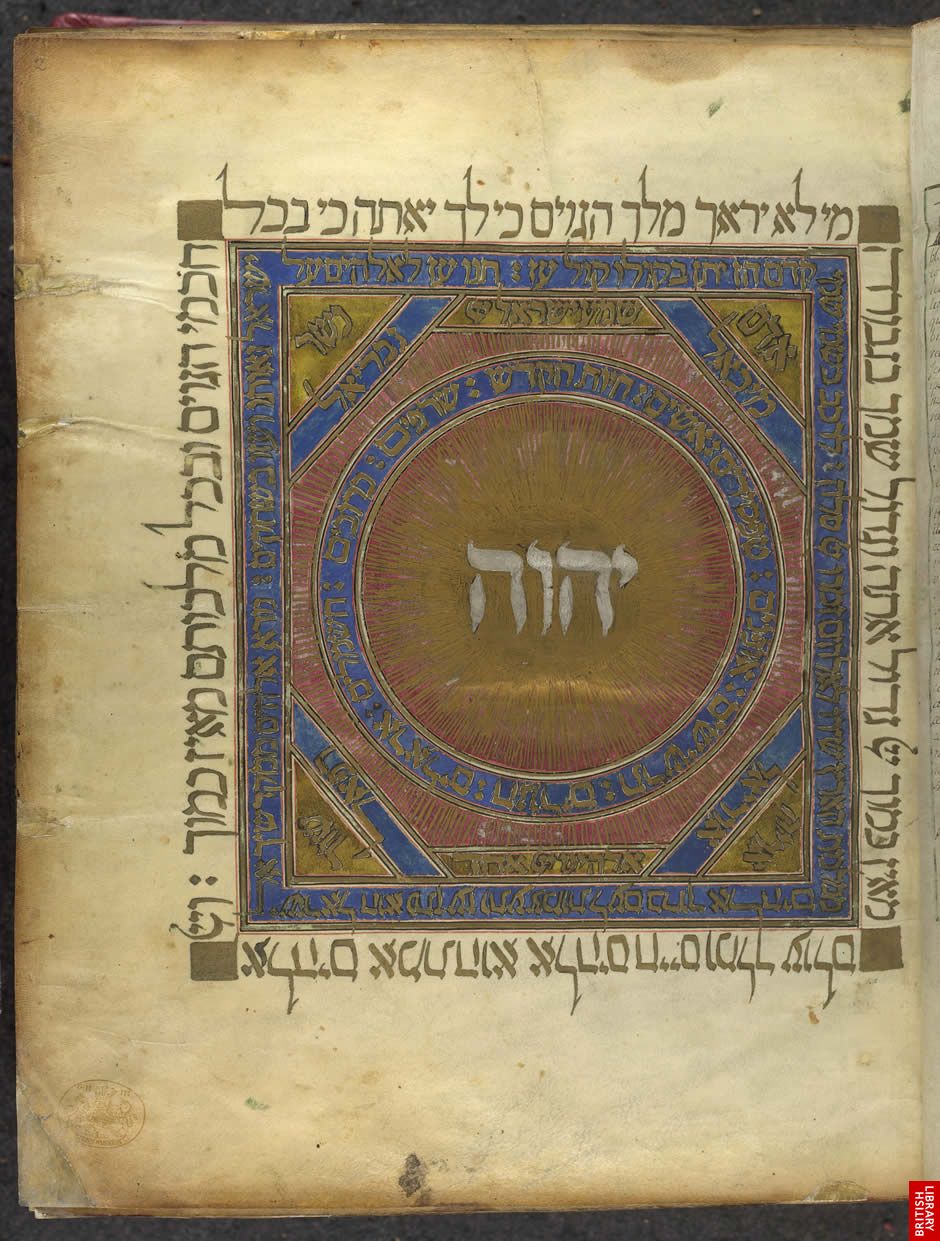Spanish Hebrew Bible, 1384
Bible and Beyond
Spanish Hebrew Bible, Solsona, Catalonia, Spain, 1384.
This 14th-century design illuminates the Tetragrammaton- the four-letter inscription denoting the name of God. Despite lacking all representational imagery, the abstract illuminations manage to evoke the ceiling of a temple dome, and imbue the manuscript with a divine presence.
The inscriptions are derived chiefly from the Hebrew Bible. The central roundel contains the Tetragrammaton, which is enclosed within a square whose borders comprise verses from Jeremiah 10- 6-7, Psalm 68- 34-36 and Psalm 105- 2.
They proclaim God’s magnificence, omnipotence and universality, as do the inscriptions inside the square. One of these is the beginning of the Shema’, the pivotal prayer in the Jewish liturgy, which conveys the monotheistic essence of Judaism – ‘Hear, O, Israel! The Lord is our God, the Lord is One!’ (Deuteronomy 6- 4).
The names of the four archangels (Uriel, Michael, Gabriel and Raphael) and the angelic classes, written around the circular feature, add a mystical dimension to the entire composition.
This manuscript belongs to a group of Spanish Hebrew Bibles known as Mikdashyot (Temples of the Lord). The Hebrew Bible was regarded as a substitute for the destroyed Temple in Jerusalem, and these codices were usually prefaced with depictions of the Temple utensils.
This Bible once belonged to a synagogue in Jerusalem and was later taken to Aleppo in Syria. Known as The King’s Bible, it was the only Hebrew manuscript donated to the British Museum by King George IV in 1823.





1 Comment on "Spanish Hebrew Bible, 1384"
Trackback | Comments RSS Feed
Inbound Links